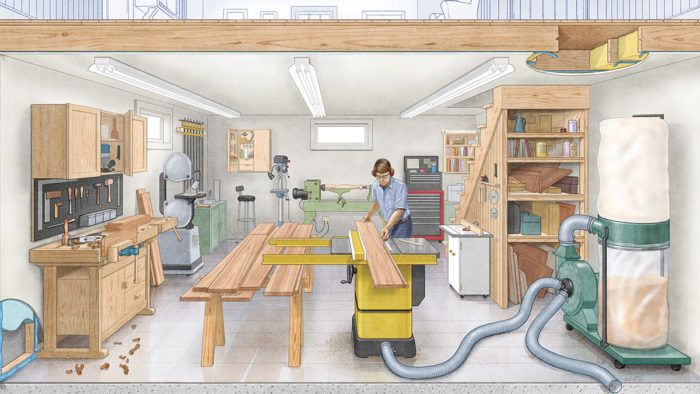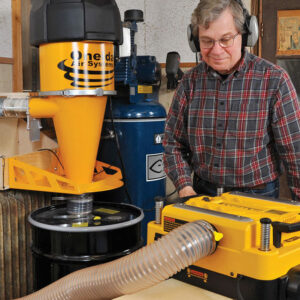15 Tips for Basement Workshops
FWW's online audience weighs in on muffling noise, stifling dust, adding light, and reducing moisture
Synopsis: Many woodworkers set up shop in the basement and have to deal with dim lighting, lack of space, dampness, and other horrors. To help them out, we asked our extensive and experienced online audience for tips on making a basement workshop drier, brighter, and more space-efficient. We also asked folks how they prevent noise and dust from infiltrating the living areas above. The response was overwhelming, and we use the ideas to create a virtual basement shop that is as comfortable to work in as it is unobtrusive to the rest of the household.
From Fine Woodworking #202
In medieval times, miscreants and criminals were tossed into the bowels of a dungeon for their offenses. Below ground, these dungeons were dark, dank, foreboding places, characterized for centuries as hideous homes for torture or cramped imprisonment.
It may be a stretch to compare a basement shop to a dungeon, but they do have similarities. Like a dungeon, a basement is a hole in the ground and attracts all manner of moisture, with issues such as mildew, rust, even small floods. Basements aren’t flooded with natural sunlight, either; single incandescent fixtures are the norm, usually scattered where you don’t need them. On top of that, basements are where household items go to die, so space is tight.
Still, for lack of an alternative, many woodworkers set up shop in the basement and have to deal with any or all of these medieval horrors. To help them out, we asked our extensive and experienced online audience for tips on making a basement workshop drier, brighter, and more space-efficient. We also asked folks how they prevent noise and dust from infiltrating the living areas above. The response was overwhelming, and we got plenty of nifty solutions to common problems. We used those ideas to create a virtual basement shop that is as comfortable to work in as it is unobtrusive to the rest of the household.
How to keep moisture at bay: Basement walls are concrete, a porous material that allows moisture penetration if you don’t take measures to stop that migration. It’s well worth the effort, though. Here in the Northeast, for instance, many basements are moist, and folks who have basements are familiar with the term “musty.” In summer, there’s an odor in the basement that’s impossible to miss but hard to pinpoint. In winter, the cold, moist air can chill even your fingernails. And the moisture does not just create an uncomfortable working environment. It also will rust your tools and increase the moisture content of lumber to undesirable levels. If you get standing water regularly, you may have issues that need to be addressed by a professional waterproofing contractor before placing expensive tools and materials in harm’s way. But if you simply have a damp space, there are many ways to fight the fog.
For the full article, download the PDF below:
Fine Woodworking Recommended Products

Ridgid R4331 Planer

Ridgid EB4424 Oscillating Spindle/Belt Sander

Hedgehog featherboards























Log in or create an account to post a comment.
Sign up Log in